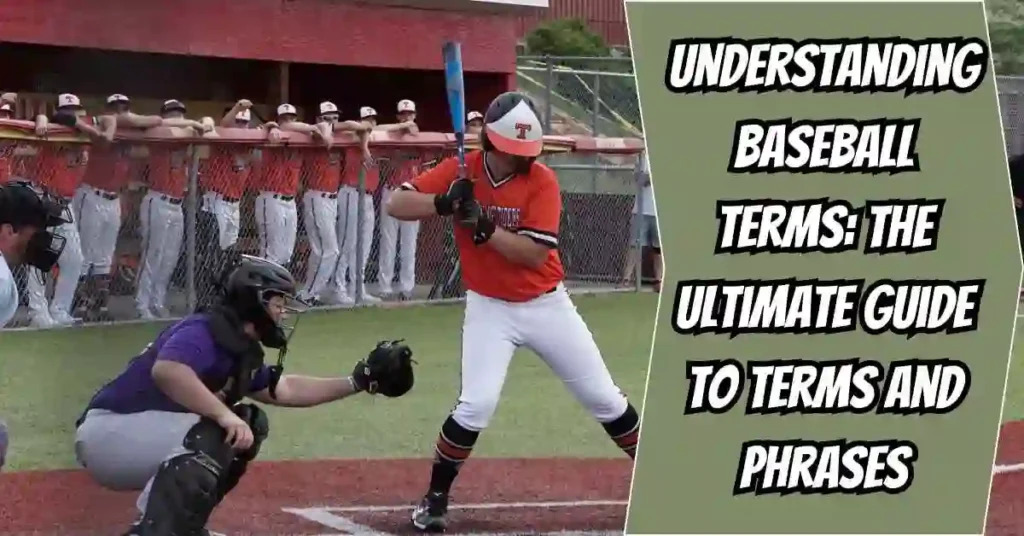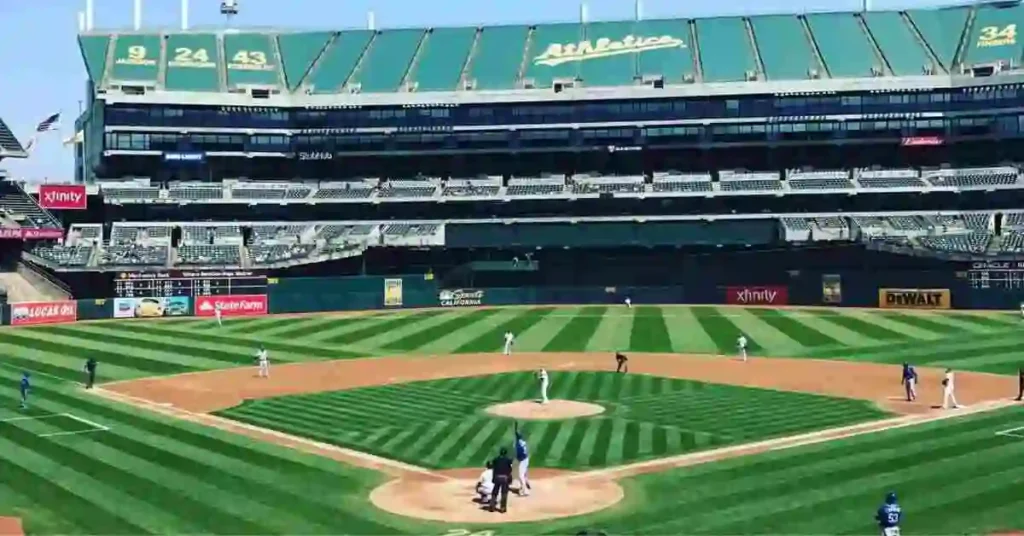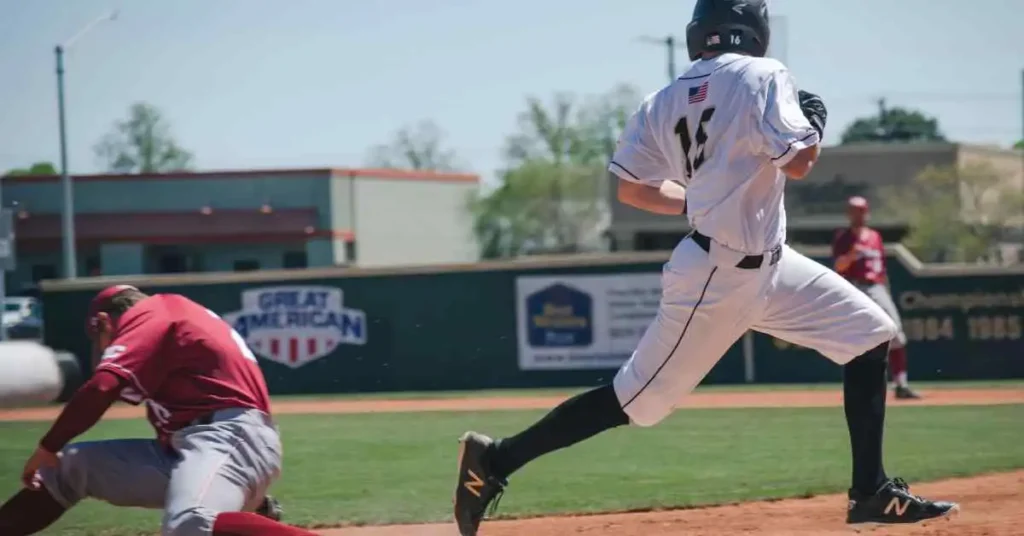
But whether you’re a lifelong fan or new to the game, there are some phrases that you might not be aware of that are centuries old, and you should know them if you want to know what’s happening on the field. Gear and technique,rules and player positions, not to mention other complex goings-on, make baseball a sport fraught with jargon that can be intimidating for new fans. We’re here to make that less daunting for you to simplify what you hear, so you can make more sense of what you see in the field, whether you are watching from the stands or playing in a game. We’ll also group baseball terms with some general categories to help learning and organisation.
Vocabulary Related to Game Strategy
Bunt:
A style of hitting in which the batter holds the bat steady and allows the ball to make light contact with it to advance runners.
Hit and Run:
A play in which the batter swings at the pitch and a runner tries to steal the next base.
Full Count:
When the batter has three balls and two strikes.
Intentional Walk (IW):
A walk issued to a batter intentionally to avoid pitching to him.
Pinch Hitter:
A means of getting a better batter into the game to hit or a regular to rest.
Base Running Terms
Steal:
When a base runner tries to advance to the next base at the precise moment a pitch is being delivered by a pitcher.
Pickoff Move:
A move by the pitcher to try to catch a base runner off balance via a quick throw.
Lead Off:
The distance a runner stands from his base while waiting for the pitcher to deliver the ball.
Slide:
A runner sliding to a base in order to avoid an out.
Common Baseball Vocabulary:
MVP (Most Valuable Player):
The player considered the most valuable in a particular season or game.
Cycle:
Hitting a single, double, triple , and home run in the same game.
Triple Play:
An unusual three-out play.
Rookie:
A player in his first year of professional baseball.
All-Star Game:
An exhibition contest in which the best players from each league face off against one another.
Vocabulary Related to Baseball Bats
When it comes to baseball, context and specific details matter for both players and fans of the game. The following are some of the most essential terms as they pertain to baseball bats:
Wood Bat:
A bat constructed of wood, often used in professional baseball. It provides good natural comfort and performance, which some people prefer.
Wood Fungo Bat:
A lightweight wooden bat that coaches use to hit practice balls for fielding drills. These bats are also longer, and the barrel is thinner compared to standard bats.
Wood BBCOR Bats:
The Batted Ball Coefficient of Restitution, it is a standard imposed to regulate the trampoline effect of composite or alloy metal baseball bats used in high school and collegiate play. With wood BBCOR bats, these expectations are met, albeit with somewhat greater performance.
Wood Bat 32 Inch:
One of the most popular lengths of wood bats, commonly used at the High School or Pro level. 32 inches is a great happy medium between being able to control and strike with power.
USSSA Baseball Bats Drop 5:
Drop 5 is a term that is used to describe the main difference between the length and weight of a Bat that is used in USSSA (United States Specialty Sports Association) playing.
Vanilla Gorilla Bat:
A great and original name for a durable and strong baseball bat. Those are the bats preferred in youth and amateur baseball.
USSSA Slowpitch Bats:
These bats are ideal for baseball as well as slow-pitch games, which is essentially a slower version of baseball! The USSSA rules govern bats.
Vocabulary Related to Baseball Gloves
The baseball glove is an integral part of a player’s arsenal, and there are many terms players should be aware of when selecting a perfect glove. The following are some essential terms about gloves:
Youth Catchers Mitt:
A catcher’s glove designed for young kids or youth who need a catcher’s mitt for the position. These mitts are small and have additional padding to protect against fast pitches.
Baseball Glove Sizing Youth and Fitting:
Learn how to measure your glove size like a pro. Youth gloves are typically smaller and engineered for a child’s hand size.
Sliding Mitt Baseball:
A Unique glove for running bases that will protect your fingers and hands if you slide to a base. These mittens protect slides.
How to Measure a Baseball Glove:
A glove size can be measured by the player’s position and hand size. Glove sizes can be measured are based on their length from the top of the index finger to the heel of the glove.
Slang Vocabulary Related to Baseball
Dinger:
A home run.
Grand Slam:
It is a home run a player runs with the bases loaded, producing a total of four runs.
Chin Music:
A pitch thrown close to a batter’s face, usually to show him up.
Can of Corn:
It refers to the lazy fly ball that could have been caught by the catcher in the outfield.
K (Strikeout):
A strikeout, or when a batter is struck out by a pitcher.
The Hole:
Name given to the space between the shortstop and third baseman or second baseman and shortstop, which is a prime spot for hits.
Bingo:
A hit that leads to a base hit, often referring to when you’re lucky enough to get in on the action of hitting the ball legally.
Four-bagger:
Another name for a home run.
Frozen Rope:
A hard-hit, straight-line drive.
Around the Horn:
A play in which the ball is tossed sequentially to each basemen to complete a double play

Vocabulary Related to Baseball Rules And Techniques
Baseball has a rulebook, and players and fans are supposed to understand it. Here’s some key terminology related to the rules and strategy of gameplay:
How to hit a Baseball:
A fundamental skill in baseball. Recreating the swing requires the body to be in the right position, focus on the ball, and the correct swing mechanics to get square contact on the ball.
Walk-Up Songs:
A stirring part of baseball at the professional levels, where players select a song to play when they step to the plate. This has the effect of priming both player and crowd.
USSSA Rules:
Rules dictated by the USSSA, which is an organization that manages many youth and adult leagues. These rules help to ensure the integrity of safe play for all involved.
Baseball Major League Teams:
Any of the professional baseball teams in Major League Baseball (MLB teams), the main professional baseball league in the US. The MLB includes teams such as the New York Yankees, Los Angeles Dodgers, and Chicago Cubs.
Gameday baseballs Rawlings:
A brand with a reputation for durable, good baseballs, often used in professional and youth leagues. You can trust Rawlings since 1887.
Weight of a Baseball Ball:
The official weight of a professional baseball is between 5 and 5.25 ounces. This adds weight to provide a stable playing experience.
Slugger Baseball:
A derogatory term for hitting someone with the bat; a Louisville Slugger is one of the most prominent brands of bats used in baseball. It’s iconic for its top-notch performance and is the hope and dream of all major league players.
Baseball Pickle:
Phrase used to refer to a player who is trapped between 2 bases and is trying to escape from being tagged by the fielders. And it typically ends with a crazy chase.
Sluggers Bar:
It is normal for players of fans of the game to have long conversations about baseball. This is occasionally an informal term for a gathering place for baseball fans, where they share stories, discuss past experiences, and more.
Vocabulary Related to Baseball Accessories
Baseball it’s not just bats and gloves, but also a bunch of different stuff that is needed for the safety and the effectiveness of the game. Here are some more words:
Sliding Mitt Baseball:
A mitt that is used by players to help protect their hands when sliding into bases. These gloves are meant to provide added protection and padding.
Sliding Mitt Baseball:
A mitt that is used by players to help protect their hands when sliding into bases. These gloves are meant to provide added protection and padding.
Vocabulary Related to Baseball Players and Positions
Each baseball position is unique, requiring different skills and abilities. The following are some key terms related to baseball positions and player roles:
Pitcher (P):
The player positioned to ‘pitch’ or throw the baseball to the batter.
Catcher (C):
The participant responsible for catching the pitcher’s pitches.
First Baseman(1B):
The player who occupies first base.
Second Baseman (2B):
This is who plays second base.
Shortstop (SS):
The fielder between second and third base.
Third Baseman (3B):
The third baseman.
Outfielder (OF):
Any of the three positions in the outfield (left field, LF), center field (CF), and right field, RF.
Designated Hitter (DH):
An offensive player who hits in the pitcher’s batting lineup, but does not take the field.
Vocabulary Related to Pitching Terms
Fastball:
A ball that is thrown very quickly and with little to no movement.
Curveball:
A pitch that is thrown with a spin that makes it curve or break downward.
Slider:
A half-speed pitch that breaks across and down.
Changeup:
A slower pitch intended to fool the batter by disrupting timing.
Strike Zone:
The region through which a pitched ball must pass for a strike to be called.
Wild Pitch:
A pitch that a catcher does not handle well, resulting in advancing the runners.
Save (SV):
It refers to a statistic that is credited to the relief pitcher that finishes the game for the winning team under certain prescribed conditions.

Vocabulary Related to Fielding Terms
Double Play (DP):
A defensive play that leads to two outs.
Error:
A ball misplayed by a fielder that enables the batter or runner to reach base.
Pickoff:
An attempt by a pitcher to catch a base runner unaware and to tag him out.
Assist:
A play in which a fielder helps another player make an out.
Force Out:
It refers to the situation when a runner has to advance to the next base and is tagged out.
Vocabulary Related to Batting and Offensive Pointers
Batting Average (BA):
The percentage of at-bats that result in a hit.
On-Base Percentage (OBP):
A statistic that reflects how frequently a player reaches base through hits, walks, or being hit by a pitch.
Slugging Percentage (SLG):
A count of the total bases a batter earns per at-bat.
OPS (On-base Plus Slugging):
The sum of OBP and SLG, a key offensive metric.
RBI (Runs Batted In):
It refers to the number of runs a player has batted in.
Sacrifice Fly (SF):
When the batter hits a fly ball, and it results in at least one base runner scoring a run.
Walk-Off:
Any hit or play that ends the game, but typically used when the home team wins the game in the last of the final inning.
Conclusion:
Baseball is a unique sport, and with that comes unique terminology. When you know these terms, you can enjoy the game more whether you are playing or watching. Now that you know these key baseball terms, you can immerse yourself more in the sport, whether you’re shopping for your first wood bat or cheering on your favorite baseball major league team.
FAQ’S:
What are the types of baseball bats?
There are multiple styles of baseball bats available, including wood, BBCOR, and aluminum bats. Wood is used exclusively at the professional level, while in college play, aluminum and metal composite bats are used.
How can I be sure my child has the right baseball glove?
To pick the best youth baseball glove, you’ll want to take into account the position, the child’s hand size, and level of comfort. Youth gloves tend to measure from 10 inches to 12 inches. A youth catcher’s glove will be larger overall and more padded, providing better protection for a younger player behind the plate.
What exactly is a vanilla gorilla bat?
The vanilla gorilla bat is a premium-quality baseball bat and one of the most powerful. Youth league players frequently start with it because of its balance and reputation.
What is a slugger in baseball?
Slugger baseball is the name given to the Louisville Slugger brand, which provides some of the best baseball bats in the world. Slugger is also used for a (power)hitter who will generally hit the ball in the gap , which is generally extra base hits(XBH).
What are the USSSA rules?
The United States Specialty Sports Association governs with USSSA rules in numerous leagues. These rules are put in place so that the baseball games are played fairly and safely with consistent performance standards at both levels of play (youth and adult).
